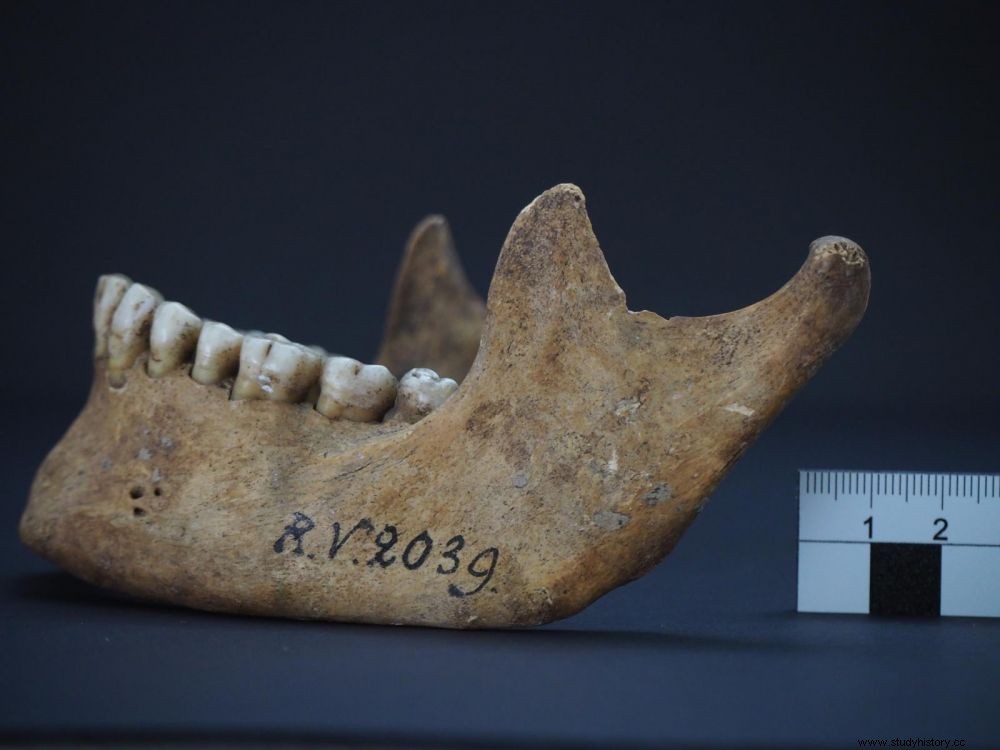Analysis of a skull found in Latvia has revealed the oldest trace of the plague. European scientists have discovered a genome of Yersinia pestis there over 5000 years old.

Mandible of a 5000 year old man on which the oldest strain of plague was found.
The oldest strain of plague discovered to date has been found on a hunter-gatherer from Latvia, around 5,000 years old. Molecular biology researchers discovered it by performing DNA analyzes on his skull. This hunter-gatherer was a man between 20 and 30 years old. He must have contracted the bacterium Yersinia pestis when cutting up a beaver. The bacteria could then have migrated from the animal's blood to the human's blood through a cut.
Fleas and bacteria
This strain of the plague is an ancient version of the disease that has wreaked havoc in many infamous pandemics. It does not yet have all the genetic characteristics to be transmitted effectively to humans. The mutation allowing greater transmission from the flea to humans is, for example, not yet present."But even without this mutation, fleas can still transmit the bacteria" , says Javier Pizarro-Cerda to Sciences et Avenir , director of the Yersinia research unit at the Pasteur Institute, who did not participate in the study. "It's just less efficient" .
The debate is not over
This led researchers to put forward a new hypothesis on the presence of the plague in the Neolithic. For them, it would only be present sporadically in eastern Europe. A theory that contradicts that which had been issued previously for the same period. The plague was then perceived as the potential factor in the decline of large human gatherings at the end of the Neolithic. More discoveries will be needed to close the debate on the influence of the plague in these populations. To learn more about this oldest strain of plague, find a detailed article on the website of La Recherche .
By Samantha Dizier
